The power of artificial intelligence has changed the modern workplace forever.
Thanks to AI, we can now streamline a lot of our processes – which means that these bots can handle the boring, routine tasks while our teams get to focus on more complex ones.
AI greatly enhances productivity across various industries.
For example, an average 2,000-word piece might take the average writer around four to six hours to complete, while more challenging write-ups could take nearly the whole day.
With the help of AI content creation tools, the hours required to complete a project are cut nearly in half.
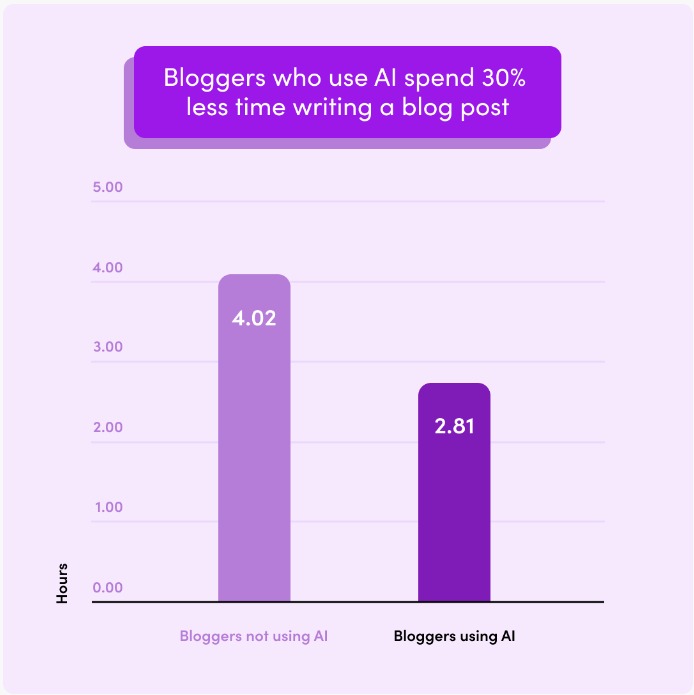
Writers and professionals in other fields basically get to accomplish more in much less time.
But in order to achieve this level of success, you will need to understand effective AI prompt writing.
You might not know, but an AI prompt can heavily influence the quality of output that you receive.
So, utilize your AI tool to its full potential. Here’s everything you should know about making the most of your AI writing prompts.
How to Write Effective AI Writing Prompts
What exactly is an AI prompt? This is essentially the bridge that connects you with the AI tool.
The “prompt” here is the specific instruction, including the set of guidelines, that’s given to the Generative AI tool – ChatGPT being the most popular – to create the content that you need.
These prompts are important because the way you create the instructions can help the AI tool better understand what you’re asking for. Whether you’re writing an essay for your college application or a script for an AI-generated video, having the right prompt will ensure the right outcome.
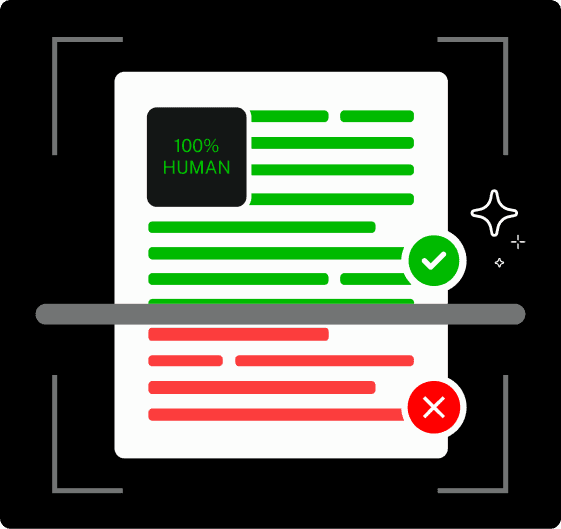
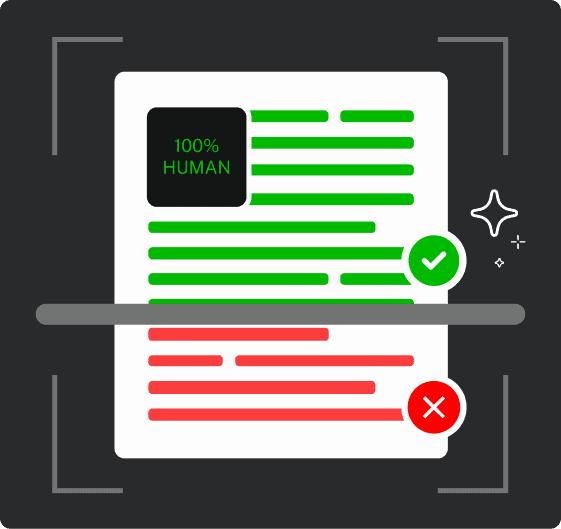
Never Worry About AI Detecting Your Texts Again. Undetectable AI Can Help You:
- Make your AI assisted writing appear human-like.
- Bypass all major AI detection tools with just one click.
- Use AI safely and confidently in school and work.
An effective AI writing prompt usually includes details about the content, tone, style, and other points you want to be covered.
It should be concise but comprehensive. Writing prompts this way makes sure that the AI has enough information to go around without getting confused by the prompt.
So, rather than saying you just want a recipe for a cupcake, be more specific and mention that the AI should act as a pastry chef creating an easy chocolate cupcake recipe that’s also gluten-free.
There are many more instructions that you can include, making the possibilities with AI prompts practically endless – as long as you know how to do it.
Before proceeding with our helpful tips below, just know that AI-generated content isn’t always accurate. As we always advise, use your AI tools as a “tool” and not as your “writer.”
We agree that AI should be used to boost productivity, but AI should also be used responsibly.

Choose a Theme or Topic
Writing an AI prompt starts with a topic—the reason you want to use the tool in the first place. But you should always be clear about what you need.
For example, if you’re just asking to write about health, then expect to get something very random, with AI trying its best to come up with something from the vague prompt you provided.
So don’t hesitate to be specific. While you’re still asking about health, what about it are you asking for? Do you want it to generate something short or super detailed?
With these, ask AI to write an informative 1,000-word article explaining the health benefits of intermittent fasting and its effects on the body.
There’s a clear topic, and the instructions are more detailed.
Providing some context gives the AI tool a better idea of what to do and provides more accurate results, and a comparison of AI detectors.
Consider Audience and Language
Think of the audience you plan on making the content available to. Your audience will read your content, so that means considering which tone, style, and language complexity will suit them best.
Instead of just making an AI prompt that says “Explain photosynthesis” – which could be easily misunderstood by AI and explained in so much detail that it’s now impossible to follow for your audience – write something along the lines of “Explain how photosynthesis works for a 5th-grade science class.”
Notice the difference? In this way, the new prompt specifies your target audience, letting the AI tool understand that they should explain your topic in a simple way.
A pro-tip here is to also use the “Act as…” prompt.
This asks the AI tool to behave as if it were something specific, like an elementary school science teacher, a fitness coach, or a spiritual guru that aims to remove darkness inside you.
The AI will attempt to emulate and adapt its answers to that specific role.
Be Specific
Companies lose billions yearly because of bad content.
This is usually caused by unclear and ineffective information that fails to deliver what needs to be delivered. A great way to start being effective is with your AI prompt.
With AI prompt writing, you always need to be specific. A specific prompt provides clear instructions and detailed context, letting the AI tool create accurate content.
Having a level of detail can help your business create high-quality content and effectively reach your target audience with ease. This ultimately saves time and resources in the long run.

Utilize Do’s and Dont’s
Just like having a checklist, you can also include do’s and don’ts in your AI prompts.
Do’s and don’ts can enhance the quality of generated content because these help the AI tool know from the get-go what to include and what to avoid.
These save a lot of time on extensive revisions.
For example, you could ask ChatGPT to “Write engaging email newsletter content introducing our new eco-friendly tumbler.
DO: Highlight the sustainability of using bamboo.
DON’T: Mention any competitors or use overly complicated jargon.”
Providing a checklist of instructions helps AI stay on track, setting a sort of standard for the content you want as well.
Include Examples
Like how you would a human, it’s also a good idea to provide examples for the AI tool as a great reference point for what content you need.
You can include a sentence or paragraph that the AI tool could resemble to improve the relevance of content.
So if you’re on the lookout for a catchy product description, you can include a nice example in the AI prompt that captures the specific style and tone that you prefer.
That being said, be aware not to use copyrighted works.
AI has a tendency to simply pull information from already published works or reproduce content that violates intellectual property rights.
This can lead to AI plagiarism, a type of plagiarism where the AI-generated content is strikingly similar to the original.
As an AI tool user, you should be aware of these possibilities and use AI responsibly.
It’s important for your work to stay original and be free of plagiarism. You could use Undetectable AI as your go-to AI detector and humanizer so that you could produce content that remains true to human writing while still maximizing AI for productivity.
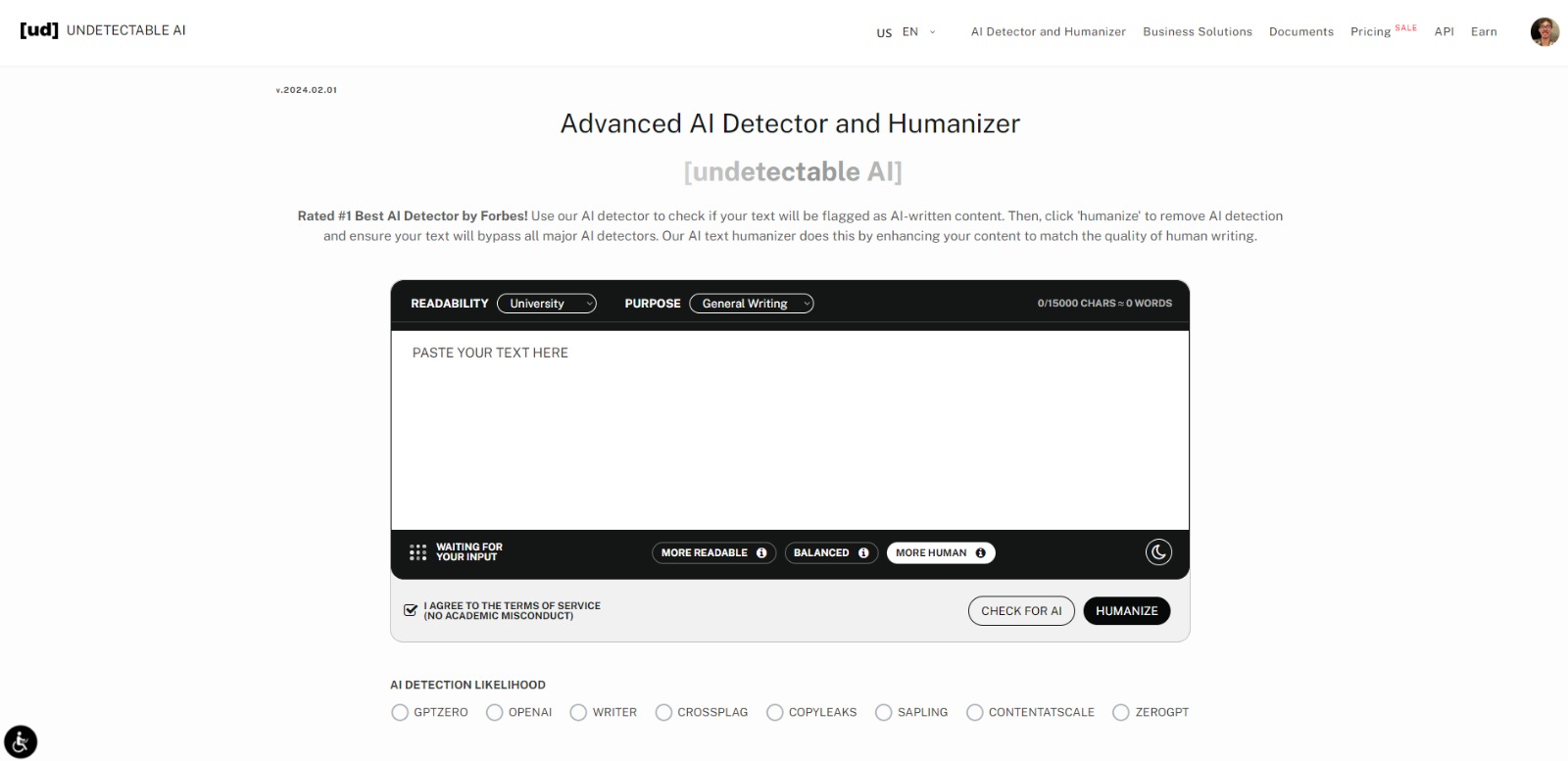
Test and Refine
Learning a skill takes time, and that includes AI prompt writing. Writing prompt AI takes lots of testing and refining to get the best possible results.
It’s totally understandable if you don’t get the results that you need at the start. AI is a fickle thing, so don’t hesitate to try and try again.
Analyze every output that’s generated with the prompts you give and learn from them. Are there better ways to instruct the tool?
Beyond manual refinement, utilizing specialized technology can drastically reduce the time it takes to achieve high-quality results.

You can use our Undetectable AI’s Prompt Generator to instantly transform rough ideas into highly effective and detailed instructions for ChatGPT when seeking the best results from your AI writing tools.
Do you need to be more specific about the tone? Is it better to add more instructions on what and what not to include? Learning the ropes will eventually get you there.
Examples of AI Writing Prompts
Now that you understand how to write AI prompts effectively, you can boost the quality of your outputs.
To get you started, here are some examples of AI writing prompts that are applied across various industries.
Marketing and Advertising
It’s important to create targeted content in the world of marketing and advertising, so knowing how to write effective AI prompts is a huge help.
Here’s an example when writing a social media post:
“Create an engaging 100-word Instagram post announcing our new line of organic skincare products. Highlight the natural ingredients we use and their benefits to the body like improved skin health and environmental sustainability. Capture the attention of eco-conscious millennials. Avoid using any language that might suggest that our products are synthetic or harmful to the environment. Go for a tone that’s informative but also upbeat.”

With specific prompts, marketers can create content that’s consistent with their brand voice.
Customer Support and Interaction
Imagine the mountains of responses that a customer service representative has to answer on a daily – and most of them are repetitive inquiries.
And while repetitive, they shouldn’t be ignored because they’re the gateway to getting people interested in your product or service. Thankfully, chatbots are here to save the day.
Here’s an example prompt for providing instructions to your customer service chatbot:
“Create a thoughtful response to address inquiries about shipping delays caused by bad weather. Provide some empathetic understanding of the inconvenience, and this should reassure our customers that their orders are being processed. Offer alternatives such as expedited shipping or store credit for future purchases. Lastly, be sure to refer to our FAQ page for additional information on our shipping policies and procedures. Maintain a professional yet understanding tone.”
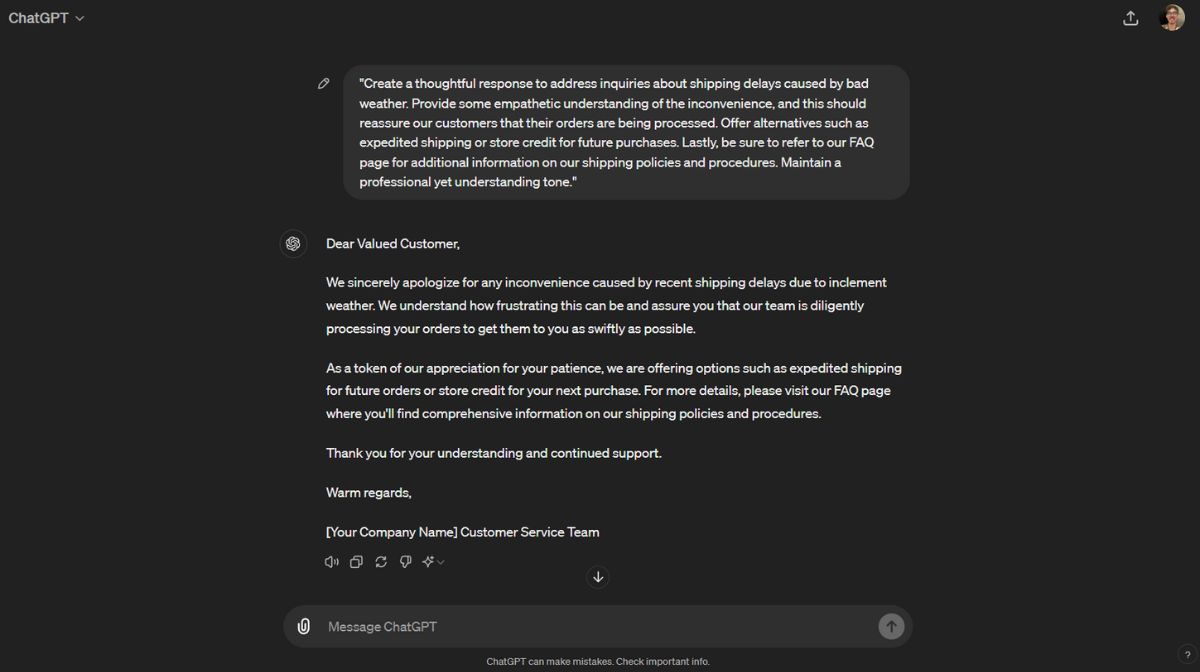
A well-instructed chatbot can reduce customer wait times (even offering 24/7 support), while your human reps can focus on important meetings and calls scheduled at the right time.
Data Analysis and Insights
AI prompt writing can also be handy for getting accurate reports and summaries during complex data analysis.
Here’s an example of summarizing data into something more understandable:
“Generate a concise report summarizing the sales performance of our top-selling products over the past quarter. Provide insights into any notable trends or fluctuations in sales volume and revenue. Identify potential opportunities for marketing growth. Avoid overly complicated jargon and make sure that the report is easily understood by non-technical stakeholders.”
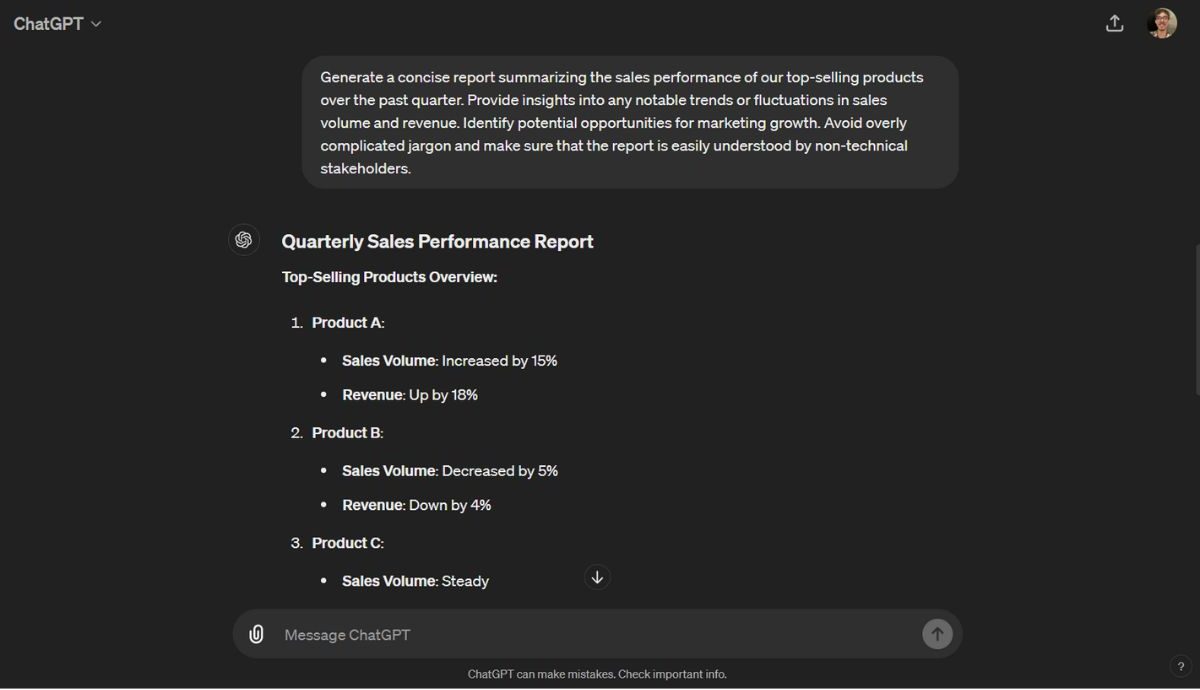
Effective AI prompts can help analysts simplify the data they produce – and even get useful information right away.
Technical Documentation and Reports
AI is useful for technical works because of its accuracy. This is why AI tools are especially popular in the tech sector.
Here’s an example prompt on providing clear instructions on new software:
“Write step-by-step instructions for setting up our new software application. Make sure all agents understand the procedure. Include annotations to guide users through the process and provide troubleshooting tips for common issues. Use simple language. Instructions should be clear and organized.”
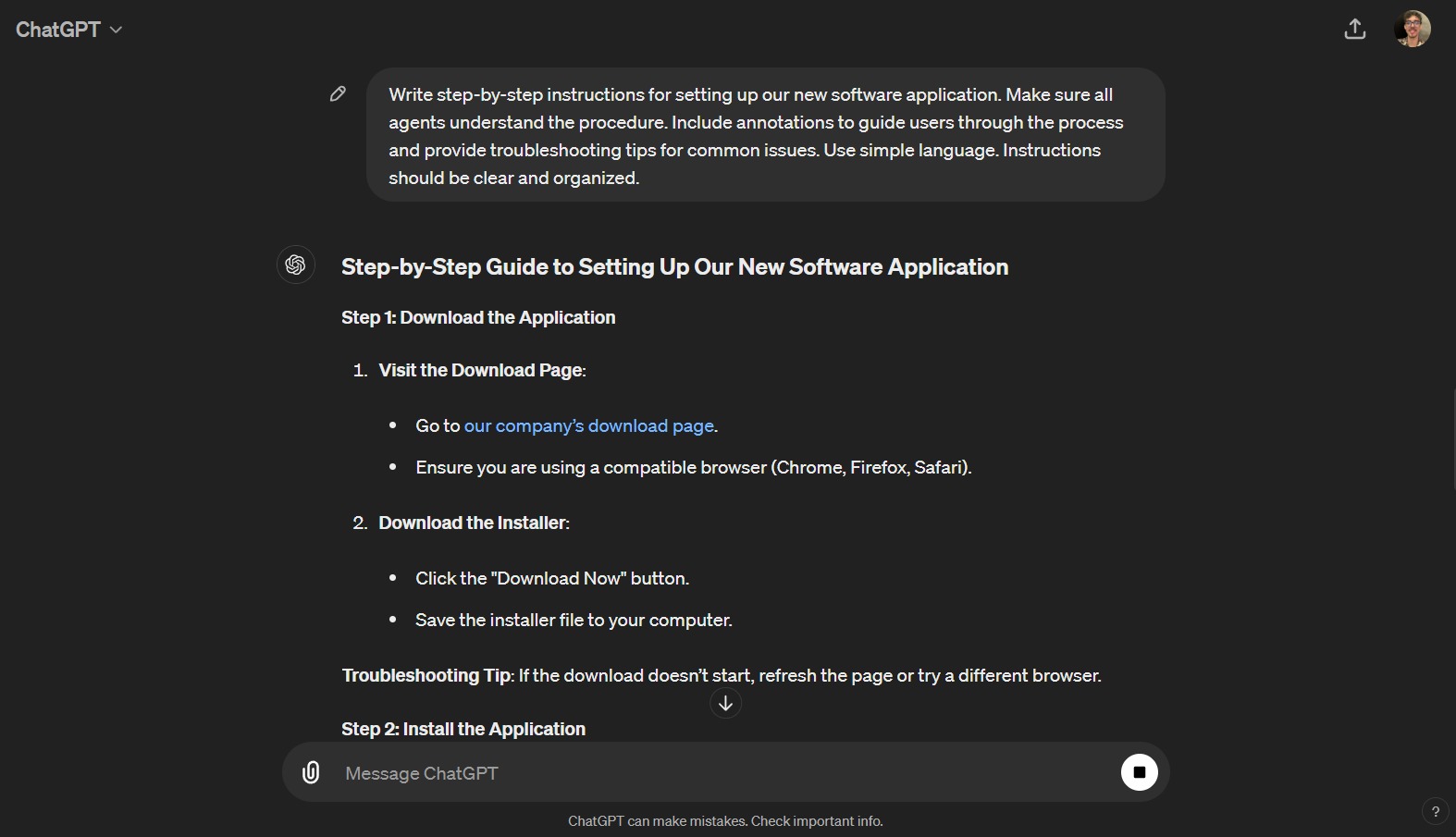
Prompts like these guarantee that information is presented clearly and is accessible to everyone, ultimately speeding up the implementation process.
Creative Writing and Storytelling
Among the most popular uses, AI has been greatly used in writing. AI is a handy tool that generates ideas and inspiration to help writers overcome writer’s block – and create a surprisingly really good hook.
Here’s an example that uses AI to set the mood in your writing:
“Provide a glimpse of a suspenseful thriller set in a remote mountain cabin during a snowstorm. Provide some mystery and intrigue to the environment. Describe a character who’s stuck inside, alone while working on their novel, hearing the crackle of the fireplace. Suddenly, there’s a loud knock on the door. Set a tone that leaves readers on the edge of their seats.”
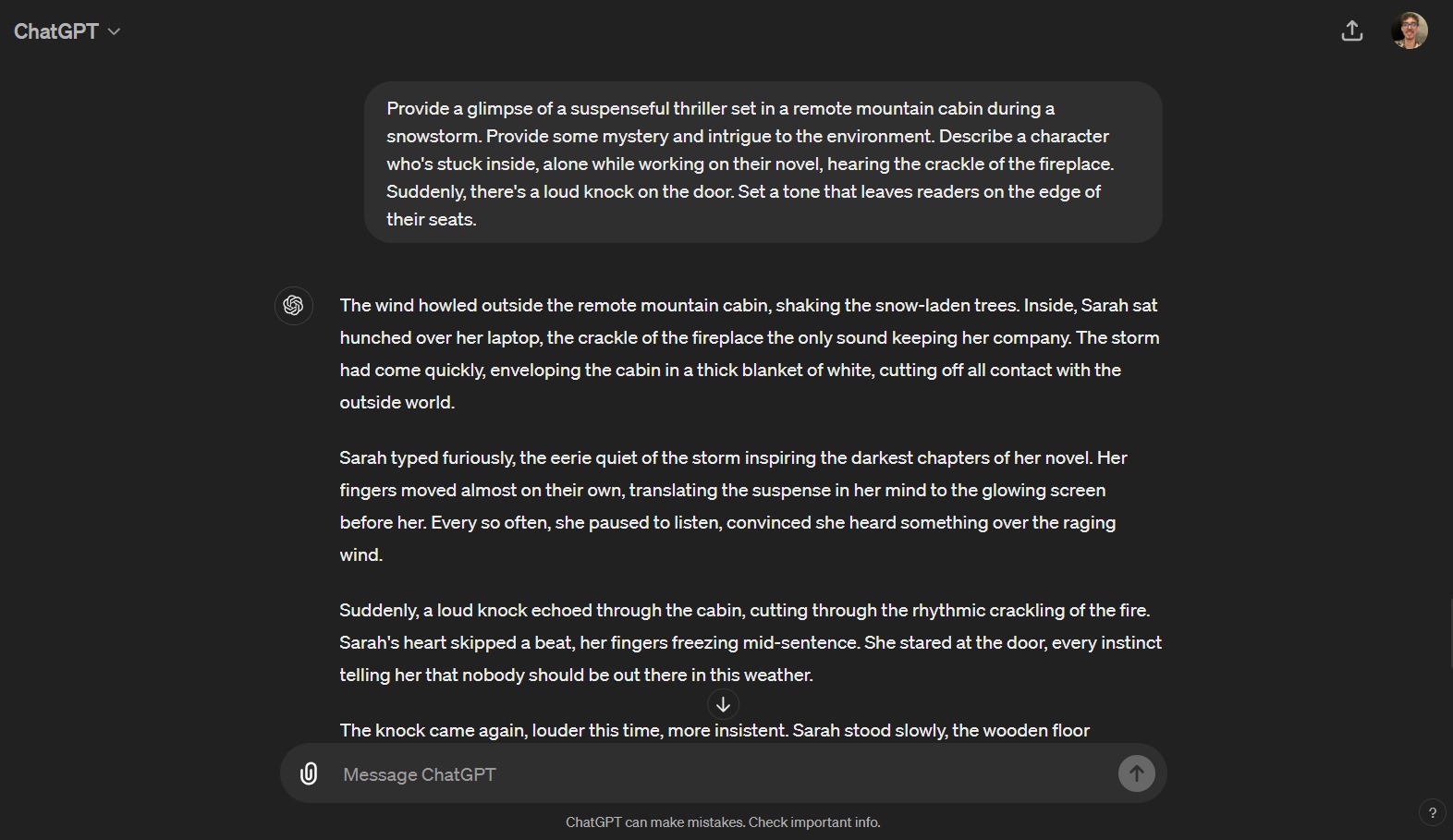
With creative prompts like these, you can get a clearer idea of what you want to write and experiment with different writing styles.
This is basically a playground, giving you free rein to go all out and see how things go.
Conclusion
Knowing how to write AI prompts is no easy feat. It takes time, patience, and serious skill to figure out how AI works.
But when you get there, it’s a potent ability that can be used across various industries and a wide range of applications.
With every AI-generated content you produce, using the right tool like Undetectable AI allows you to maximize your content in a way that also seamlessly blends with authentic human writing.
You reach your target audience while still being able to use AI to its fullest. Try it now for FREE using Undetectable AI’s widget below and see the difference (English only)!
With some good practice and attention to detail, you can leverage AI to streamline your processes, greatly boost productivity, and unlock new possibilities for your business.
